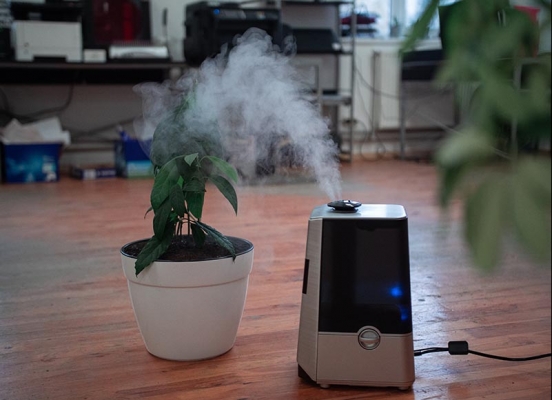Indoor air pollution is one of the greatest environmental dangers of the 21st century. According to the World Health Organization, more than 7 million people die each year due to the adverse impacts of air pollution on respiratory, cardiovascular, and neurovascular systems. Recent studies have also found that indoor air pollution can also have devastating impacts on mental well-being, ranging from mood disorders to neurodegenerative diseases. Let us explore how we can reduce our exposure to indoor air pollution, thus avoiding physical health and mental well-being issues:
1. Natural Ventilation
It is the best way to allow fresh air into indoor living spaces. Natural ventilation allows the replacement of stale air with fresh air, thus helping to control room temperature, replenish oxygen, remove malodors and harmful airborne pollutants, and expelling carbon dioxide.
Short-term indoor activities, like painting, welding, soldering, or sanding, have the potential to generate high levels of toxic pollutants that may persist in the air over a long period of time unless ventilation systems are used. Harmful indoor pollutants, such as formaldehyde and radon, can contribute to building-related illnesses commonly known as the sick building syndrome. It is essential to have a proper design of the ventilation system in order to provide indoor air free from pollutants.
2. Air Cleaners
An air cleaner improves the indoor air quality by removing pollutants from the air in a confined space, especially particle pollution. Air purifiers can effectively remove common indoor air pollutants such as malodors, smoke, dirt, and pet dander. The filter in the clean air captures the pollutants while the clean air is introduced into the room using the in-built fan. The filters are made up of paper, fiberglass or mesh, and require periodic cleaning and replacement.
3. Dehumidifiers
Humidity has a major influence on indoor air quality. High levels of humidity encourage the growth of mold, dust mites, pollen and bacteria, besides increasing the concentration of VOCs. The purpose of a dehumidifier is to reduce the moisture level (between 35 to 50%), thus improving indoor air quality.
Using a fan, the dehumidifier draws warm air currents into its coils which contracts as it is fed through the refrigerated. The condensation is left inside the dehumidifier and falls into the storage tank while the dried air is released back into the room.
4. Houseplants
Plants have effective air cleaning qualities and absorb air pollutants, thus acting as a natural air purifier that is both cost-effective and therapeutic. Houseplants trap harmful toxins and remove common chemical compounds, such as formaldehyde, benzene, and Trichloroethylene. Some of the popular air-purifying indoor plants include are rubber trees, spider plants, snake plants, weeping figs, and peace lily.
5. Therapeutic Methods
The mental health issues associated with indoor air pollution can be tackled by therapeutic tools. Environmental therapy aims to treat environment-related health problems by strengthening the connection between the environment and its elements. The popular nature-based therapy activities are nature meditation, horticultural therapy, animal-assisted therapy, and nature conservation tasks.
Light therapy is an emerging therapy that involves the use of an artificial source of light to treat depressive disorders with seasonal patterns, sleep issues, and other types of depression. The patient sits near a device called a light therapy box which gives off bright light that mimics the natural light. It is believed that light therapy has a positive impact on brain chemicals linked to mood and sleep, thus easing depressive disorders. Light therapy is also known as phytotherapy.
Bottom Line
Indoor air pollution is responsible for a wide range of physical and mental health issues. To mitigate the harmful impacts of air pollution, you can improve natural ventilation, use air purifiers, dehumidifiers, and houseplants in your premises, and opt for therapeutic treatment tools.
To know more, please check BioEnergy Consult.



